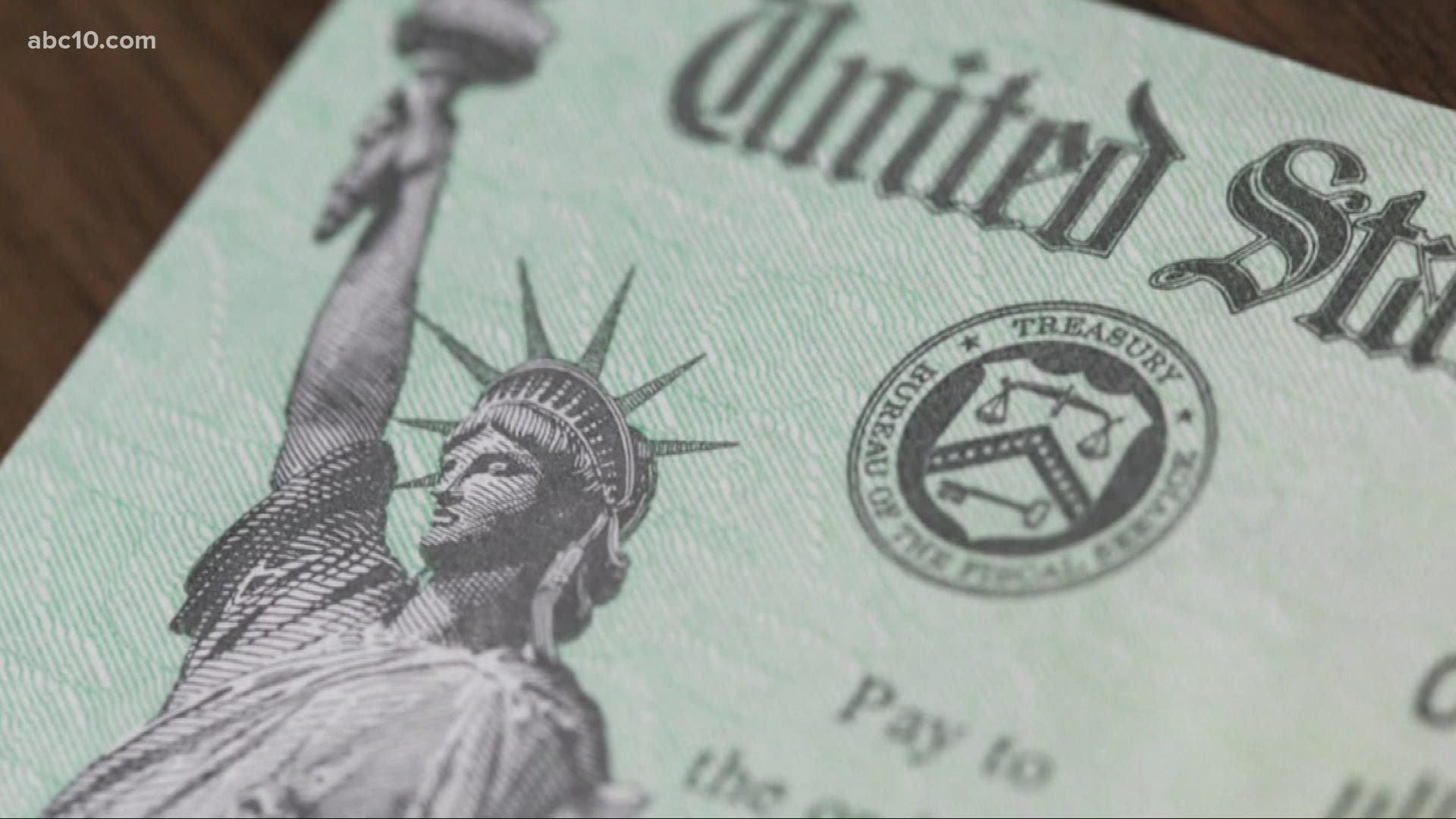WASHINGTON — President Joe Biden and Senate Democrats have agreed to further limit who exactly would receive a third stimulus check as part of the latest proposed $1.9 trillion COVID-19 relief bill.
The move is a key concession to party moderates as Democrats look to push forward with quickly passing the plan.
The "American Rescue Plan" is meant to deliver another round of aid, including $1,400 direct payments to millions of Americans, to stabilize the economy while the public health effort seeks the upper hand on the pandemic.
The House of Representatives passed its version of the proposal early Saturday morning, but changes were expected in the Senate version which is set to be unveiled on Wednesday.
While both plans include a third stimulus check, the Senate proposal tightens the upper income limits at which people would qualify.
Who gets third stimulus check under the Senate plan?
The legislation provides a third stimulus check that amounts to $1,400 for a single taxpayer, or $2,800 for a married couple that files jointly, plus $1,400 per dependent.
In both the Senate and House plans, individuals earning up to $75,000 would get the full amount, as would married couples with incomes up to $150,000, and heads of households with incomes up to $112,500.
The key difference is the Senate plan phases out the $1,400 stimulus checks at a faster rate for those with incomes above the initial levels.
So under the Senate deal, individuals making $80,000 or more, heads of households making $120,000 or more and couples making $160,000 or more would not receive a stimulus check.
Under the House plan, the hard cut-off for individuals was $100,000 and $200,000 for joint filing couples.
When will Senate vote on stimulus?
Senate Majority Leader Chuck Schumer said the Senate debate would start as soon as Wednesday night and predicted, “We'll have the votes we need to pass the bill."
Democrats are pushing the massive coronavirus relief measure through Congress under special rules that will let them avoid a Senate filibuster by Republicans, a tactic that Democrats would need an unattainable 60 votes to defeat.
By using budget reconciliation, Democrats only need 51 votes. While the Senate is split 50-50, Vice President Kamala Harris serves as the tie-breaking vote. So Democrats can push the COVID-19 relief bill ahead without any Republican votes.
House Majority Leader Steny Hoyer said he expects the Senate to approve the plan by Friday or Saturday.
When will the third stimulus check be sent out?
Democrats want to send a final package to Biden by March 14, when an earlier round of emergency jobless benefits expires.
But because the Senate plan differs from what passed in the House, it will have to go back to the House for approval again after the Senate votes on it.
If things stay on track, the House plans to reconvene on Monday to start work on passing the Senate proposal.
During the first round of stimulus checks in April 2020, it took about two weeks for the federal government to start distributing the money. It took around one week for the second round of checks, worth $600, in early January.
If the IRS is able to keep with previous timelines, Americans could start receiving stimulus checks sometime between late March to early April. For example, if the stimulus package is signed into law by March 14, based on previous relief plans, the first direct deposits may go out the week of March 22.
Another possible complicating factor is that this round of stimulus checks will likely be going out while the IRS is dealing with tax returns.
Why $1,400 checks and not $2,000?
Biden's plan called for $1,400 checks for most Americans, which on top of the $600 provided in the most recent COVID-19 bill would bring the total to the $2,000 that Biden has called for.
But Biden initially did not make that differentiation. Biden said on January 4 while campaigning for Democrats Jon Ossoff and Raphael Warnock ahead of Georgia's Senate runoff elections, "Their election will put an end to the block in Washington of that $2,000 stimulus check. That money that will go out the door immediately."
What else is included in Biden's $1.9 trillion package?
Under Biden's multipronged strategy, about $400 billion would go directly to combating the pandemic, while the rest is focused on economic relief and aid to states and localities.
About $20 billion would be allocated for a more disciplined focus on vaccination, on top of some $8 billion already approved by Congress. Biden has called for setting up mass vaccination centers and sending mobile units to hard-to-reach areas.
Click here to see the full breakdown of where funds will be allotted.
The Associated Press contributed to this report.

